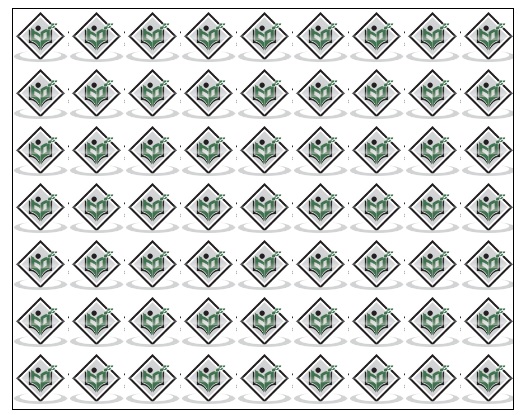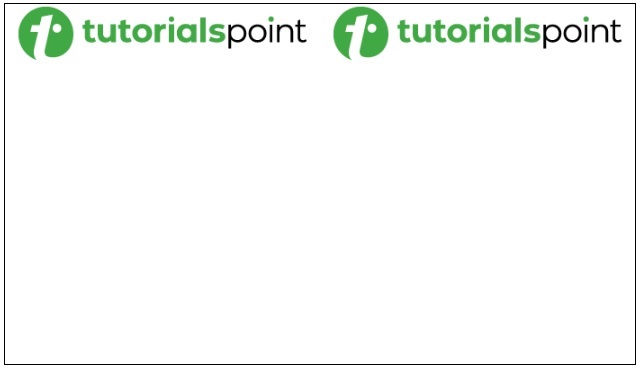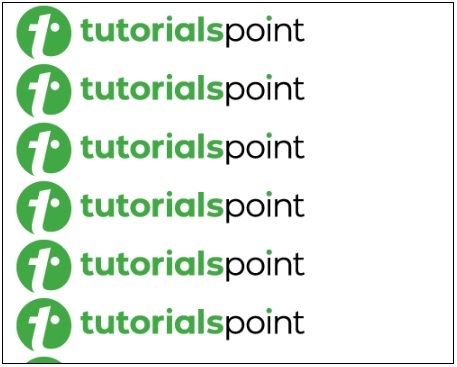
- HTML Canvas - Home
- HTML Canvas - Introduction
- Environmental Setup
- HTML Canvas - First Application
- HTML Canvas - Drawing 2D Shapes
- HTML Canvas - Path Elements
- 2D Shapes Using Path Elements
- HTML Canvas - Colors
- HTML Canvas - Adding Styles
- HTML Canvas - Adding Text
- HTML Canvas - Adding Images
- HTML Canvas - Canvas Clock
- HTML Canvas - Transformations
- Composting and Clipping
- HTML Canvas - Basic Animations
- Advanced Animations
- HTML Canvas API Functions
- HTML Canvas - Element
- HTML Canvas - Rectangles
- HTML Canvas - Lines
- HTML Canvas - Paths
- HTML Canvas - Text
- HTML Canvas - Colors and Styles
- HTML Canvas - Images
- HTML Canvas - Shadows and Transformations
- HTML Canvas Useful Resources
- HTML Canvas - Quick Guide
- HTML Canvas - Useful Resources
- HTML Canvas - Discussion
HTML Canvas - createPattern() Method
The HTML Canvas createPattern() method creates a pattern using the specific graphic and renders it onto the Canvas element by repeating it based on the parameters passed.
Syntax
Following is the syntax of HTML Canvas createPattern() method −
CanvasRenderingContext2D.createPattern(object, repetition);
Parameters
Following is the list of parameters of this method −
| S.No | Parameter & Description |
|---|---|
| 1 |
object An image object or any available graphic from the Canvas element to use for the pattern. |
| 2 |
repetition A string value indicating the pattern image. Accepted values are -
|
Return value
The method when called by the context object renders a pattern onto the Canvas with the specified repetition value.
Example
The following example takes a logo and prints a pattern onto the Canvas element context until it spaces out using HTML Canvas createPattern() method.
<!DOCTYPE html>
<html lang="en">
<head>
<title>Reference API</title>
<style>
body {
margin: 10px;
padding: 10px;
}
</style>
</head>
<body>
<canvas id="canvas" width="500" height="400" style="border: 1px solid black; background-color: black;"></canvas>
<script>
var canvas = document.getElementById('canvas');
var context = canvas.getContext('2d');
var image = new Image();
image.src = 'https://www.tutorialspoint.com/green/images/diamond.png';
image.onload = function() {
var pattern = context.createPattern(image, 'repeat');
context.fillStyle = pattern;
context.fillRect(0, 0, canvas.width, canvas.height);
}
</script>
</body>
</html>
Output
The output returned by the above code on the webpage as −

Example
The following example repeats the given image only on the horizontal side using the createPattern() method.
<!DOCTYPE html>
<html lang="en">
<head>
<title>Reference API</title>
<style>
body {
margin: 10px;
padding: 10px;
}
</style>
</head>
<body>
<canvas id="canvas" width="700" height="400" style="border: 1px solid black; "></canvas>
<script>
var canvas = document.getElementById('canvas');
var context = canvas.getContext('2d');
var image = new Image();
image.src = 'https://www.tutorialspoint.com/images/logo.png';
image.onload = function() {
var pattern = context.createPattern(image, 'repeat-x');
context.fillStyle = pattern;
context.fillRect(0, 0, canvas.width, canvas.height);
}
</script>
</body>
</html>
Output
The output returned by the above code on the webpage as −

Example
The following example repeats the given image only on the vertical side using the createPattern() method.
<!DOCTYPE html>
<html lang="en">
<head>
<title>Reference API</title>
<style>
body {
margin: 10px;
padding: 10px;
}
</style>
</head>
<body>
<canvas id="canvas" width="500" height="400" style="border: 1px solid black; "></canvas>
<script>
var canvas = document.getElementById('canvas');
var context = canvas.getContext('2d');
var image = new Image();
image.src = 'https://www.tutorialspoint.com/images/logo.png';
image.onload = function() {
var pattern = context.createPattern(image, 'repeat-y');
context.fillStyle = pattern;
context.fillRect(0, 0, canvas.width, canvas.height);
}
</script>
</body>
</html>
Output
The output returned by the above code on the webpage as −
